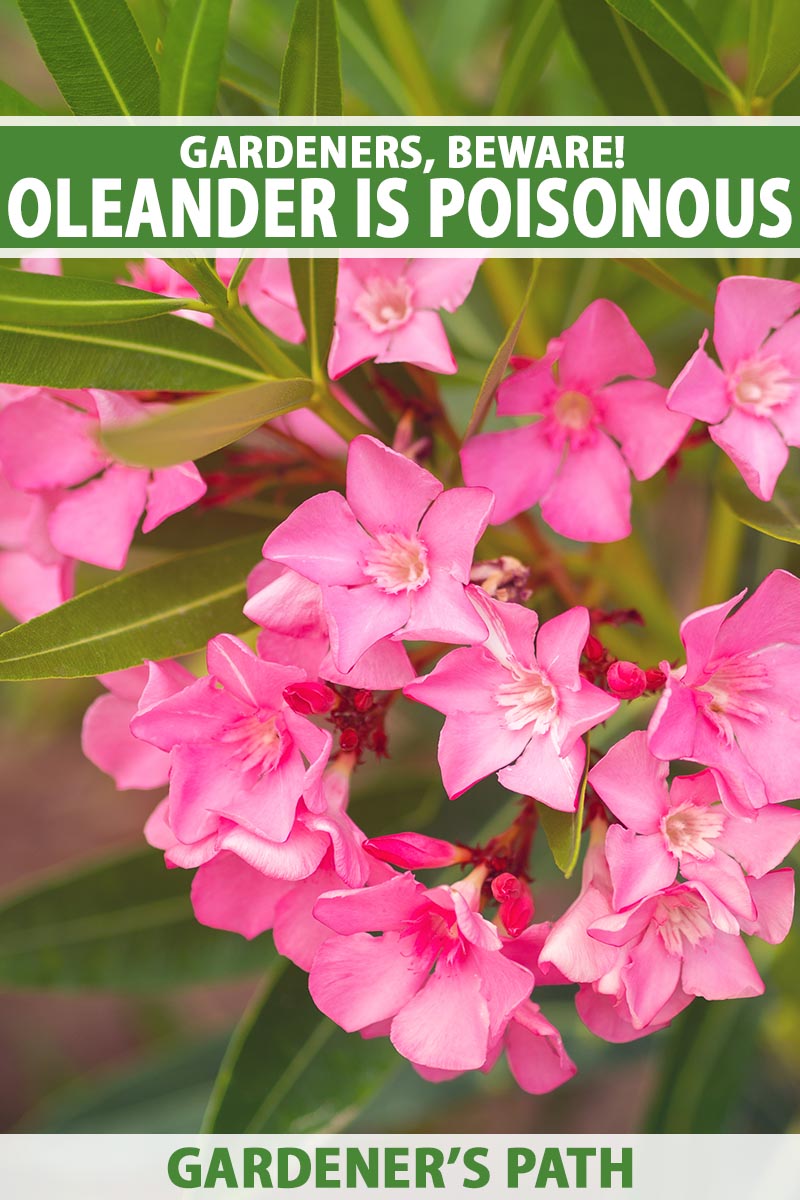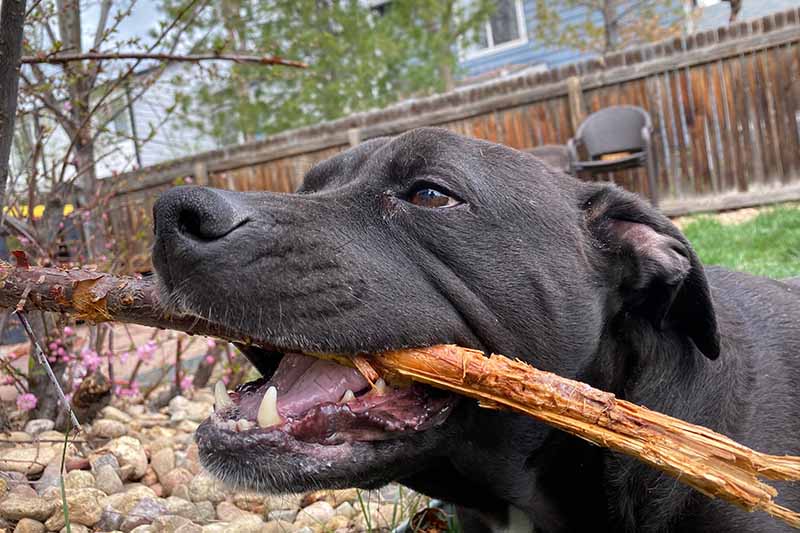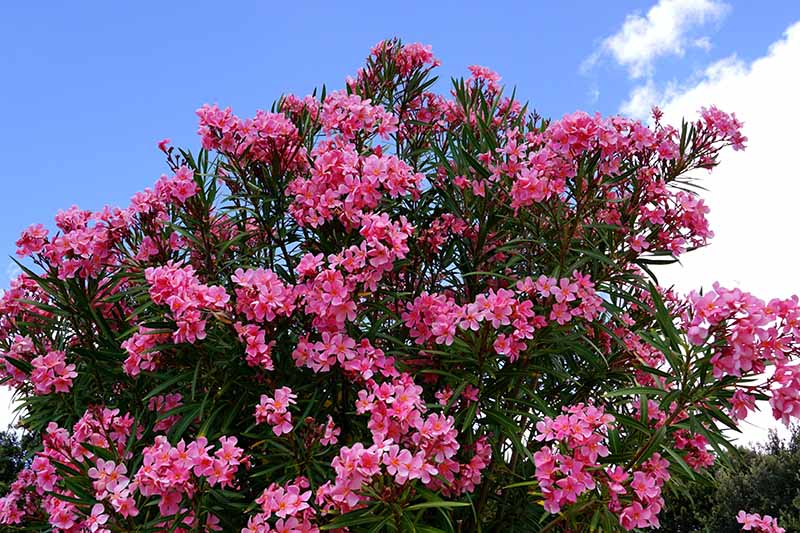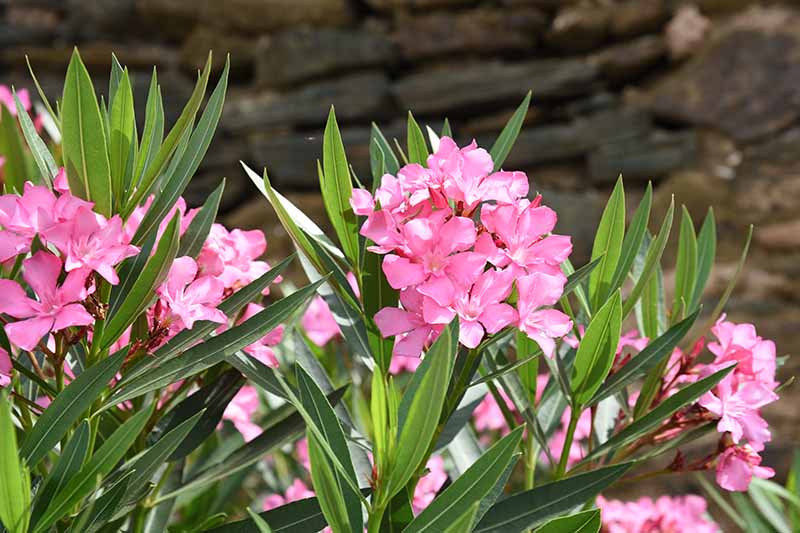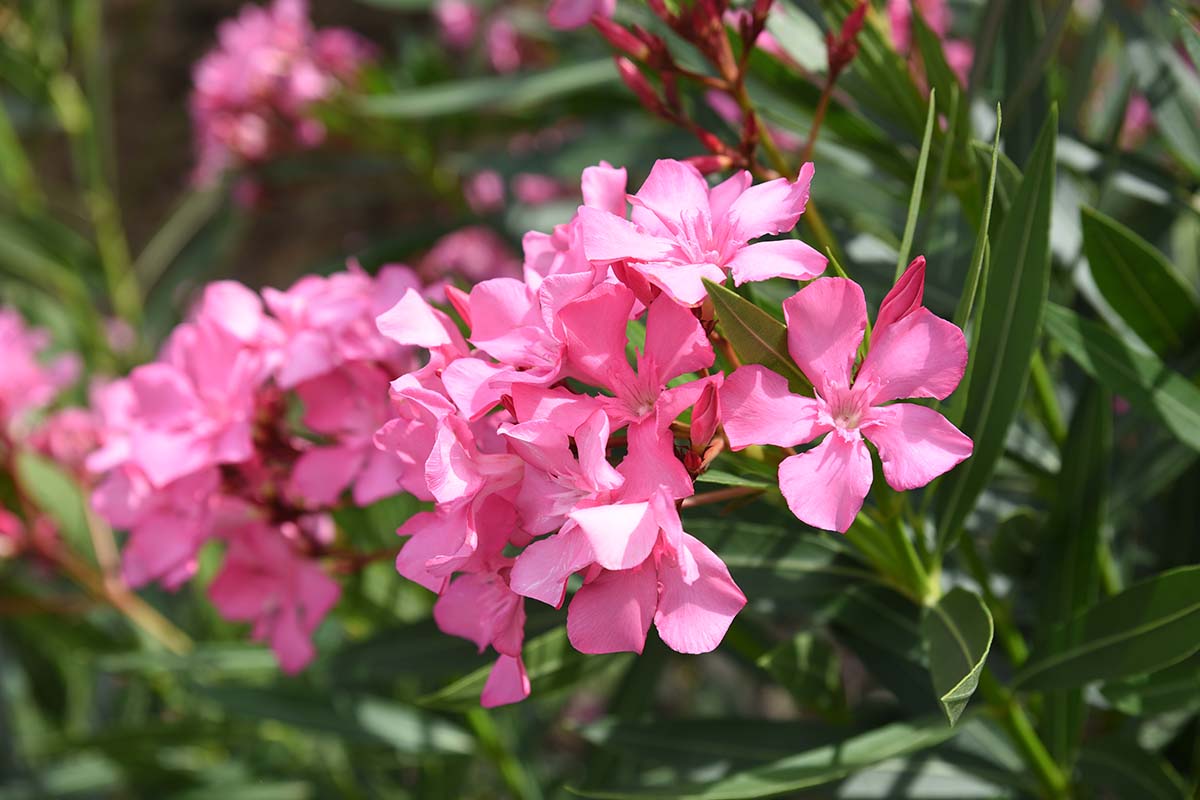If humans or animals eat the blooms, leaves, stems, or roots, they can suffer a host of serious, or even fatal, reactions. We link to vendors to help you find relevant products. If you buy from one of our links, we may earn a commission. Every gardener, pet owner, or parent must take the proper precautions when oleander is part of their plan for creating a windbreak, a hedge, or a coastal or container garden. If you fear you, a family member, or a visitor has ingested oleander, immediately call 911 or your local emergency number to learn how to proceed. They may put you through to the national Poison Control hotline, which will direct you to local or regional sources for emergency care. Or you can call the national Poison Control hotline directly in the US, at 1-800-222-1222. Pets and livestock are also at risk. Call your emergency vet immediately upon the discovery of ingestion, or you can reach the ASPCA Animal Poison Control Center at 1-888-426-4435.
When Is Oleander Poisonous?
The shrub with the botanical name Nerium oleander is a member of the Apocynaceae family, also known as dogbane. It contains cardiac glycosides in its roots, blooms, leaves, and stems – or in other words, everywhere. All parts of the plant are poisonous when eaten, even if the leaves are dry or the shrub is dormant or dead. The smoke created by burning the dry branches or other shrub debris can also cause a toxic reaction in your airways, or your whole system.
Poisoning Symptoms in People
First, let’s discuss how a potentially fatal reaction progresses when a person ingests oleander. As confirmed by a 2014 toxicological survey, the compounds it contains create a toxic effect that initially causes symptoms of gastrointestinal distress, including nausea and vomiting, as well as an elevated pulse. The cardiac glycosides which include oleandrin, nerin, digitoxigenin, and olinerin, are rapidly absorbed into the bloodstream after ingestion and inhibit the action of the sodium-potassium pump in the cell membranes. The effect on the heart cells causes the increased pulse, followed by a slowing of the heart rate and arrhythmias. Eventually, the heart rate may become so slow that the victim may lapse into a coma, followed by death. The nervous system can also be impacted. There, the toxicity may cause a succession of reactions including sleepiness, shaking, disorientation, seizures, and potential collapse. Though rare, oleander poisoning can result in death when as little as a single leaf has been ingested. But it can also be treated, especially if poisoning is caught early and victims or their caretakers seek emergency care immediately. Reactions to skin contact with any part of the plant or its milky sap are typically less serious, but still harsh in many cases. In addition to the cardiac glycosides, the shrub contains saponins which cause skin irritation and eye inflammation. When unknowing gardeners burn dry branches or garden debris gathered when pruning or clearing, anyone who breathes the smoke may experience severe airway irritation. The cardiac glycosides are not deactivated by heat and systemic toxicity is another potential result of inhalation. Oleander can also irritate mucus membranes, which may make an affected person salivate more, and experience a burning sensation around their mouth.
Symptoms of Poisoning in Pets and Livestock
Our four-legged friends kept as pets inside the home and farm animals can also react poorly to eating part of a nerium shrub, and may even die as a result. The ASPCA notes that oleander is toxic to many species, including dogs, cats, budgies, rabbits, and horses. Potential symptoms of poisoning in animals include vomiting, diarrhea, high blood pressure, labored breathing, seizures, tremors, an abnormal heart rate, dehydration, and shock. Dogs might also start drooling excessively, according to the American Kennel Club. Veterinarians may be able to administer treatments for a favorable outcome, so pet owners should always seek immediate veterinary intervention if they suspect oleander poisoning. A couple of common treatments include benzodiazepines for seizures and intravenous fluids for dehydration. People who raise livestock should avoid planting this shrub anywhere in the vicinity of pens, barns, or pastures. Even though all parts of the plant have an acrid taste, it’s possible for clippings or the occasional dry leaf to be mixed in with pasture or hay and other fodder. Sadly, for farm animals, the first indication that they’ve accidentally ingested oleander is often their sudden death.
Preventive Steps Gardeners Should Take
There are ways to avoid the ill effects of oleander poisoning while growing this coastal garden favorite. First, be extra careful when choosing where to plant! If you are responsible for young kids, or the neighbors (or their pets) have access to your property, you may want to plant something else and avoid the risk. Otherwise, take care to plant nerium only in areas that aren’t easily accessible, versus growing it close to a porch or sidewalk. For household pets, the biggest threat is container-grown specimens brought inside to overwinter. If you have dogs or cats that will experiment with gnawing even the foulest-tasting vegetation, keep these potted plants away from them. Or, skip growing nerium altogether if your only option is containers that you bring inside to overwinter. If oleander is grown outdoors, be sure to monitor your pets closely if they like to make an occasional snack of ornamental vegetation. This particular shrub tastes bitter, so only the most adventurous or obsessed pups or cats are likely to sample any part of the plant. Still, it’s important to take precautions since ingestion could be fatal. Watch out for fallen leaves in garden ponds or other water sources that your pets may drink from. According to Dr. Larry J. Thompson, clinical toxicologist at the College of Veterinary Medicine, Cornell University, the presence of a few oleander leaves in a small pool could potentially poison a dog who drinks the water. Also monitor your pets in parks and public spaces where they may encounter these plants. Just as important, if you grow edible plants, make sure the veggie patch is located nowhere near oleander shrubs. Even dwarf varieties may shed a few leaves into the veggie patch, where they could get mixed in with the produce you pick, especially leafy vegetables like lettuce, or the fruits of plants that are bushy and could conceal oleander debris. If there are larger varieties growing in your landscape, bear in mind that they can reach 15 to 25 feet tall and cast leaves even further afield. If there’s any danger of the toxic foliage or stems getting mixed in with your greens or other veggies, make sure to sort your harvest while wearing protective gloves. If some oleander snuck in, be sure to carefully dispose of any produce that may have come into contact with it – don’t toss just the toxic leaves. There is no point in taking the risk of ingesting poison just for the sake of preserving a bowl of salad ingredients! While these are low- to no-maintenance shrubs, it’s also important to gear up first if you prune them or pick up and dispose of spent blooms, leaves, or branches that have fallen. To avoid skin irritation, make sure you and any helpers wear gloves, long pants, long sleeves, and protective eyewear when working with these plants. Also, make sure you don’t create a problem for susceptible airways. Never burn any part of this shrub, even if it’s dry. That applies to any branches you trim, any leaves or blooms you pick up off the ground, as well as any other plant parts that you might typically burn as a means of disposal. Bag the debris and dispose of it in the trash, not on your compost pile, to avoid the risk of contamination. Make sure anyone who assists you with gardening chores knows about all of these safety precautions, too. For the careful gardener, parent, or pet owner, it can be a delight that’s enjoyed for years to come. This tough shrub grows in coastal gardens with salt air, keeps blooming through drought, and can tolerate poor soil. And in full flower, it’s a beauty to behold. If you have experienced growing this shrub in a way that prevents toxic ingestion, or if you have any questions, feel free to share your input in the comments section below. And if you know the risks and feel ready to take all the necessary precautions to grow these shrubs at home, you might want to check out these oleander guides next:
How to Grow and Care for Oleander Shrubs9 of the Best Oleander Varieties to Grow in Your Garden
